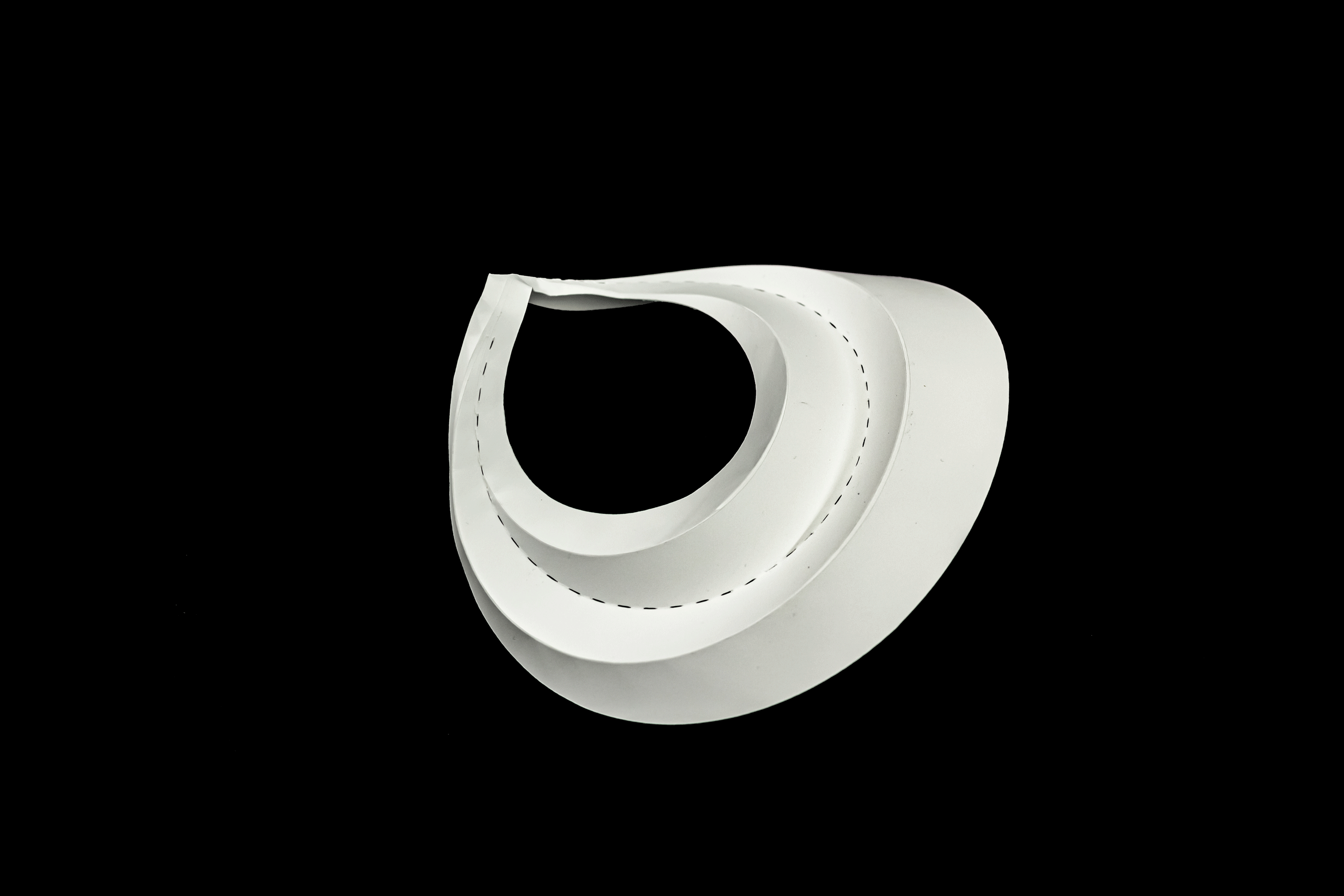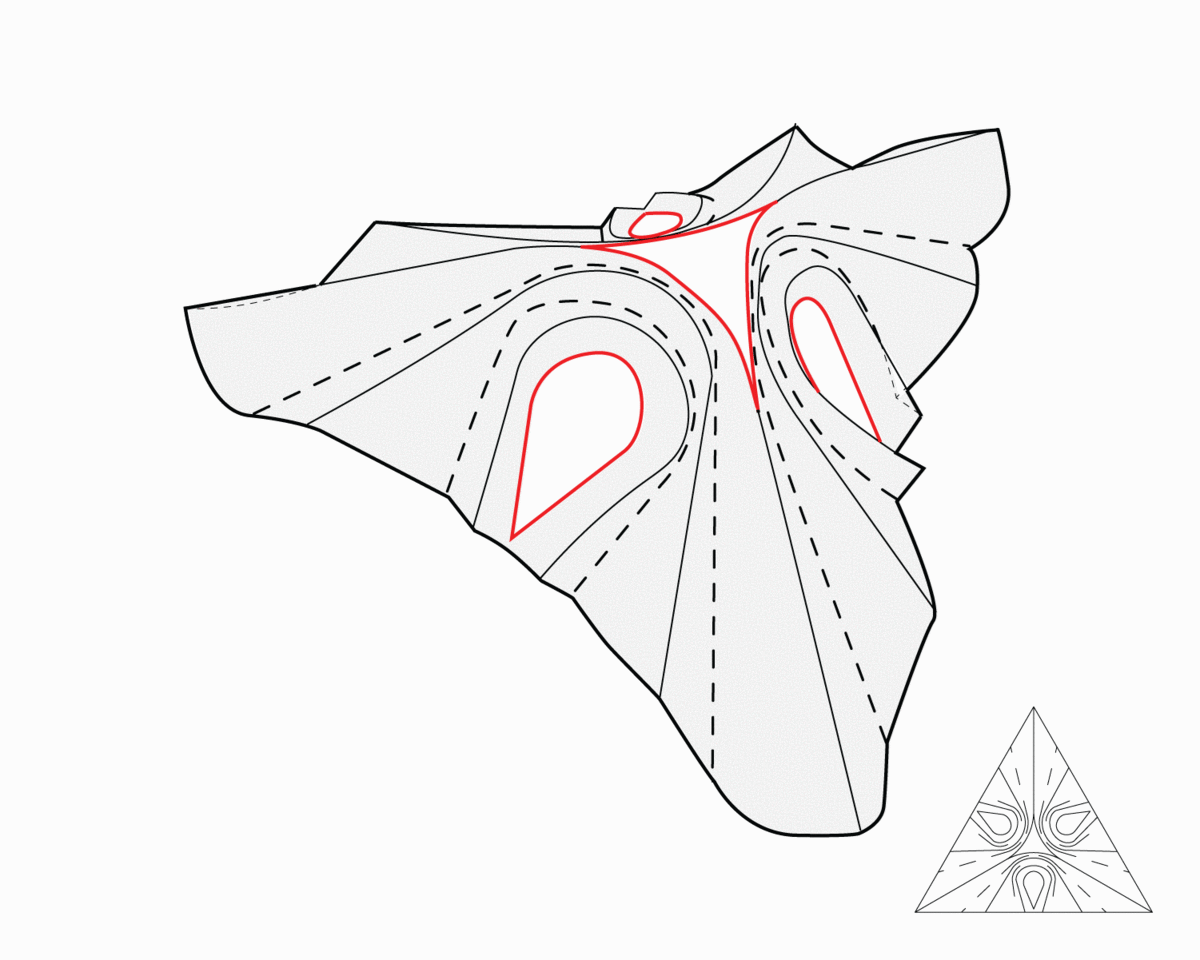Rice Architecture
F_X01
FOLDING MODEL / EXPERIMENT SIX
Katherine Hui
Yanela Diaz
Charlotte Cohen
Our folding model experiments with the structural and aesthetic properties of curved folds. Folding on a curve allowed a sense of rigidity to arise out of an otherwise flexible piece of bristol. Each experiment includes a central void. As the curves move outward from the central void, the concentric circles which alternate between convex and concave angles allow the form to naturally “ease” into a new system. The distance between the convex and concave determines whether or not the form overall will be concave or convex. We were able to manipulate the size and proportion of the folds for each model, using one continuous material. This allowed for opportunities to fold into itself and contract and expand in different directions, while also being easily pliable. Together, the models generate a unique language of curved creases that also result in elegant structural forms that can be applied at a human scale, such as chairs, furniture, a bus shelter or small pavilion structures.
PHYSICAL MODEL








DIGITAL MODEL



















